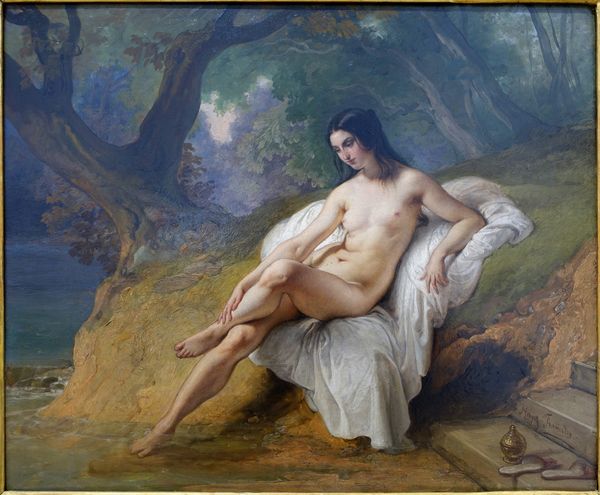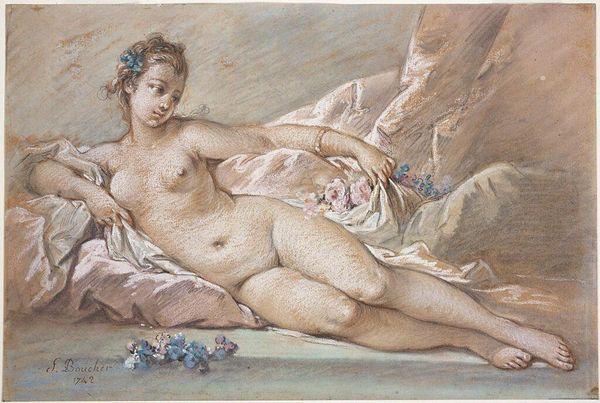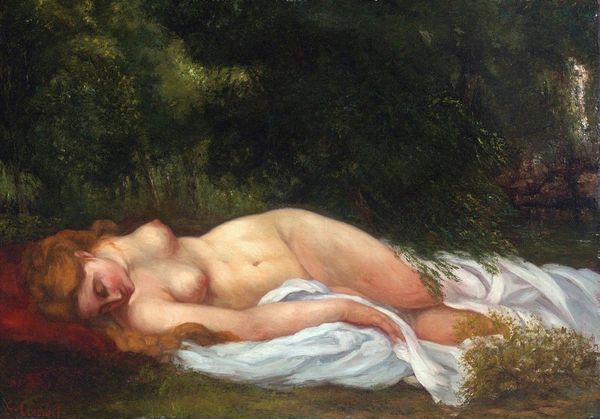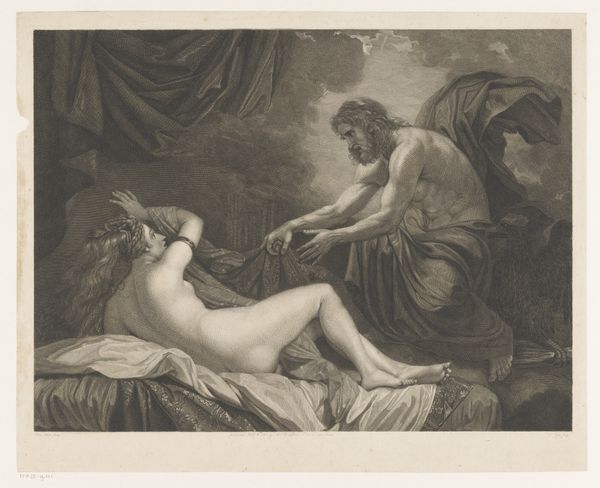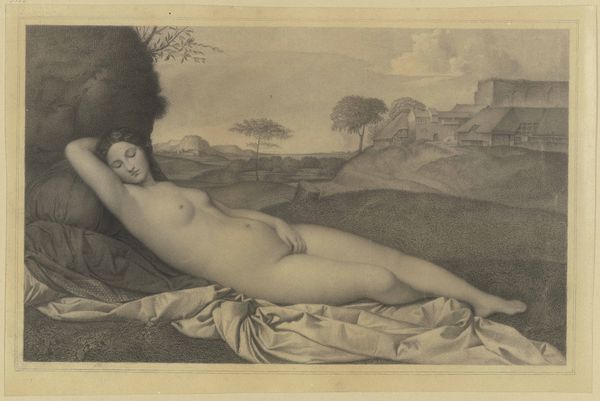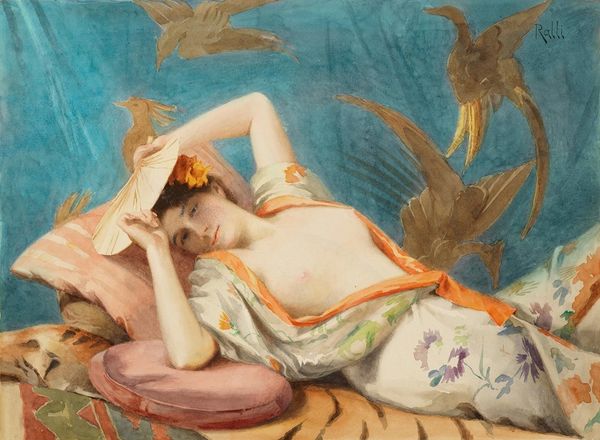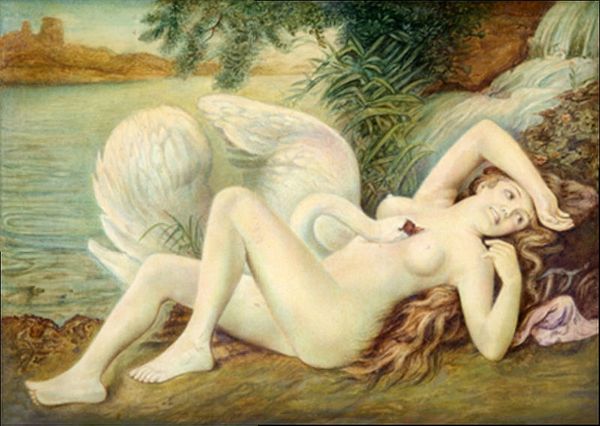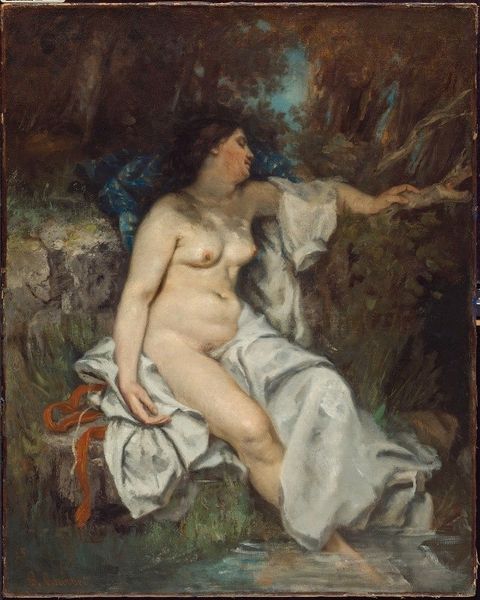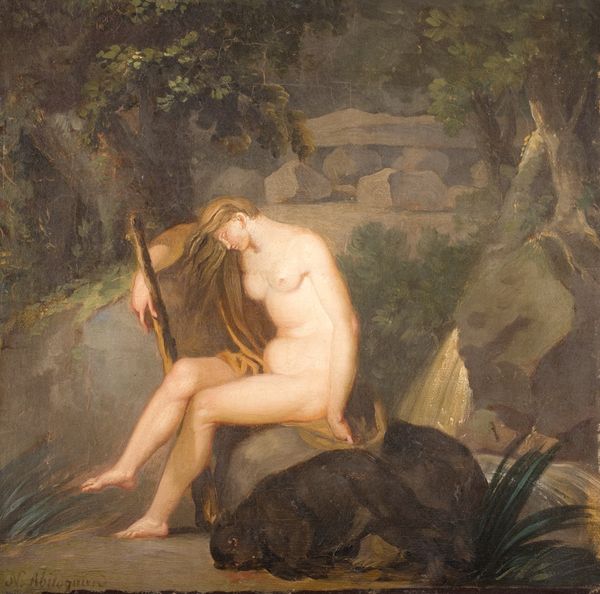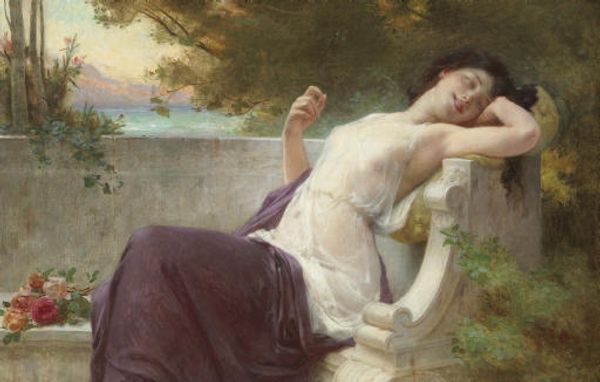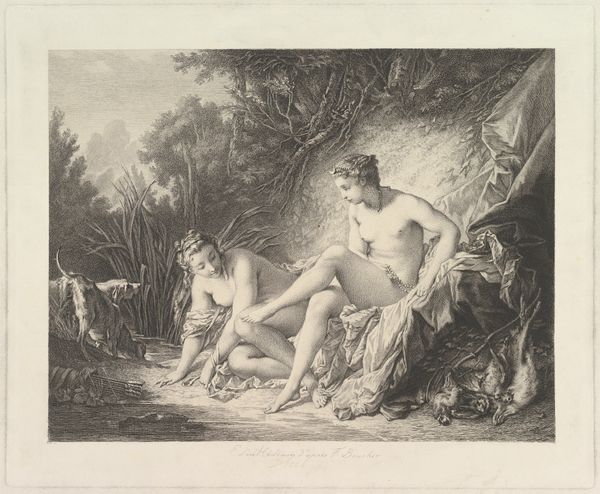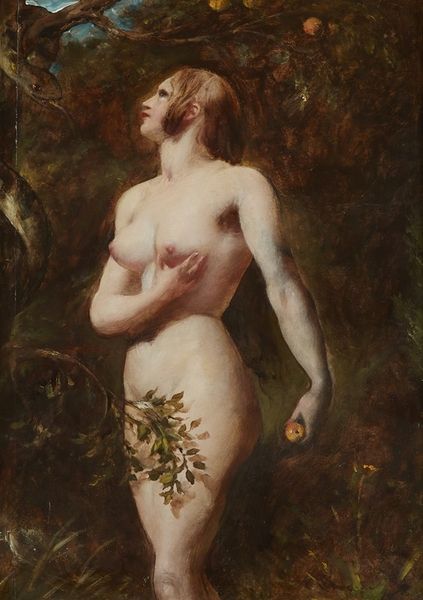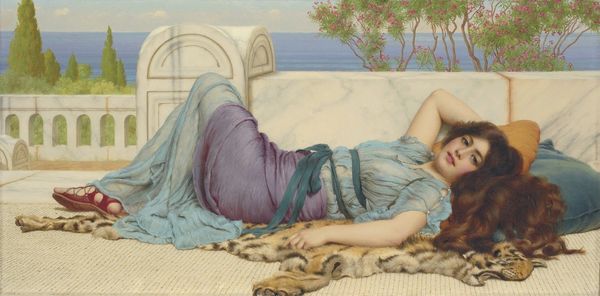
drawing, print, watercolor
#
drawing
# print
#
landscape
#
figuration
#
watercolor
#
romanticism
#
portrait drawing
#
academic-art
#
nude
#
portrait art
Dimensions: sheet: 9 13/16 x 15 13/16 in. (24.9 x 40.2 cm)
Copyright: Public Domain
Curator: Here we have Karl Joseph Aloys Agricola's "Psyche Asleep in a Landscape," created in 1837. The artwork resides here at the Met. It's a watercolor, drawing and print combination. Editor: What immediately strikes me is its stillness and calm. The subject, a sleeping woman, is rendered in soft, muted colors against a very idyllic background. There is an intense atmosphere. Curator: Yes, Agricola, a proponent of romanticism, effectively uses the composition and the interplay of light and shadow to enhance this mood. The very careful arrangement of forms—note how the drapery flows in harmony with the landscape—invites quiet contemplation. Editor: I’m intrigued by the historical context in which Agricola created this work. This interest in the nude form obviously has ancient roots but flourished in academic art settings and upper class spheres in the 19th Century. I wonder how audiences received a depiction of Psyche in this relaxed state. Curator: That’s insightful. It's a confluence of traditions; both the mythological theme of Psyche, symbolic of the soul, and its presentation within an academic framework. The composition leans heavily on classical ideals of beauty while at the same time embracing a more emotional, almost sentimental portrayal. There is a certain psychological vulnerability on display. Editor: It does reflect a specific societal lens on beauty and vulnerability. Seeing it in our contemporary environment here in the museum, does that context amplify or detract from Agricola's intent? I see this as having a significant place in the romantic era. Curator: Interesting! That push and pull between our current perceptions and Agricola's original context I believe helps to continuously reinvigorate the work with meaning. The very structure encourages such an interplay of ideas and responses. I leave with questions, myself, for this viewing. Editor: Likewise. The ability to engage and consider reveals, once again, art's vital contribution to not just visual experience, but continuous conversations throughout the times.
Comments
No comments
Be the first to comment and join the conversation on the ultimate creative platform.
